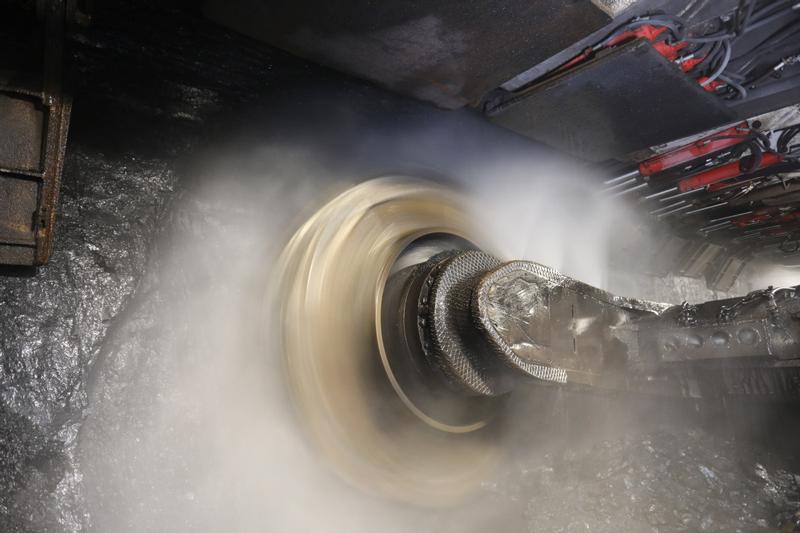 Automated machinery in operation at the Baodian Coal Mine in Jining, Shandong. (PHOTO PROVIDED TO CHINA DAILY)
Automated machinery in operation at the Baodian Coal Mine in Jining, Shandong. (PHOTO PROVIDED TO CHINA DAILY)
The coal chemical industry should be transformed and upgraded to tap its unleashed potential in China, as the country is rich in coal resources that are vital for domestic energy security, industry experts said.
Coal chemicals are one of the key sectors the Chinese government plans to develop, and coal-to-olefins (CTO) has been a strategic growth sector that has received government support as China attempts to diversify its industrial inputs and reduce its reliance on crude imports, said Tang Sisi, an analyst at research firm BloombergNEF.
The biggest challenge to producing olefins from coal is its high carbon dioxide emissions compared to petroleum-based production
Tang Sisi, an analyst at research firm BloombergNEF
Coal is a small but growing feedstock to produce olefins, which is believed to be one of the most promising ways to transform coal into a high value-added chemical in the future, she said.
She made the remarks as Chinese President Xi Jinping stressed efforts to develop the country's energy industry while visiting a chemical company under the China Energy Investment Corp during his inspection tour of Yulin, Shaanxi province on Sept 13.
The coal chemical industry, as a sector with huge potential and good prospects, must be transformed into a high-end, diversified and low-carbon industry, Xi said, adding sci-tech innovation is a most pressing task and efforts must be accelerated to achieve breakthroughs in key and core technologies.
Lin Boqiang, director of the China Center for Energy Economics Research at Xiamen University, said China will mainly rely on coal, the country's main energy source, at least in the short to medium term.
China is planning to build the world's largest and most efficient green energy system in the coming decades, replacing fossil fuels, which account for around 85 percent of China's total energy consumption, with green energy.
Luo Zuoxian, head of intelligence and research at the Sinopec Economics and Development Research Institute, said the new coal chemical industry should be developed in a sustainable manner to realize effective utilization of energy, and it's also important to upgrade the technology to realize the benefits of modern coal chemical engineering.
Operated by CHN Energy Yulin Chemical Co Ltd, a subsidiary of China Energy Investment Corp, the major clean coal production base is designed to produce chemical materials by processing raw coal. A methanol-to-olefin project with an installed capacity of 600,000 tons per year and a coal-to-methanol project with a designed capacity of 1.8 million tons annually are already under operation, the company said.
The clean coal production base is a major result of the country's innovation strategy that will help promote clean and effective use of coal, improve China's ability to guarantee energy security, and boost regional development, it said.
Shaanxi province has been actively promoting the development, promotion and application of technologies for pollution and carbon reduction in recent years. It also plans to build technological infrastructure for carbon dioxide capture, utilization and storage.
Raw coal output among Shaanxi province's major industrial firms hit 679 million tons last year, accounting for 17.7 percent of the country's total, while the province's crude oil output totaled 26.94 million tons, making up 13.8 percent of the national total, the Economic Daily said.
China is rich in coal but lacks oil and gas. China has heavily relied on oil and gas imports in recent years, with crude oil imports last year accounting for more than 70 percent of its consumption and this is projected to rise to more than 80 percent by 2030.
Under this circumstance, coal-to-liquid technology provides another solution to China's lack of oil. It is expected product demand including coal-to-methanol and coal-to-olefin will be among the most promising ways to turn coal into a high value-added chemical in the future and gradually show rapid growth momentum, which will present broad market prospects for the development of the coal chemical industry.
As China released stricter regulations to reduce smog and promoted carbon trade in several pilot cities as the country aims to achieve carbon peak by 2030 and carbon neutrality by 2060, there are still hurdles and limits for coal chemicals, including water supply, transportation, waste disposal and carbon emission issues, said Tang.
"The biggest challenge to producing olefins from coal is its high carbon dioxide emissions compared to petroleum-based production," she said. "Its expansion is subject to government policy to support coal demand versus control of carbon emissions."


